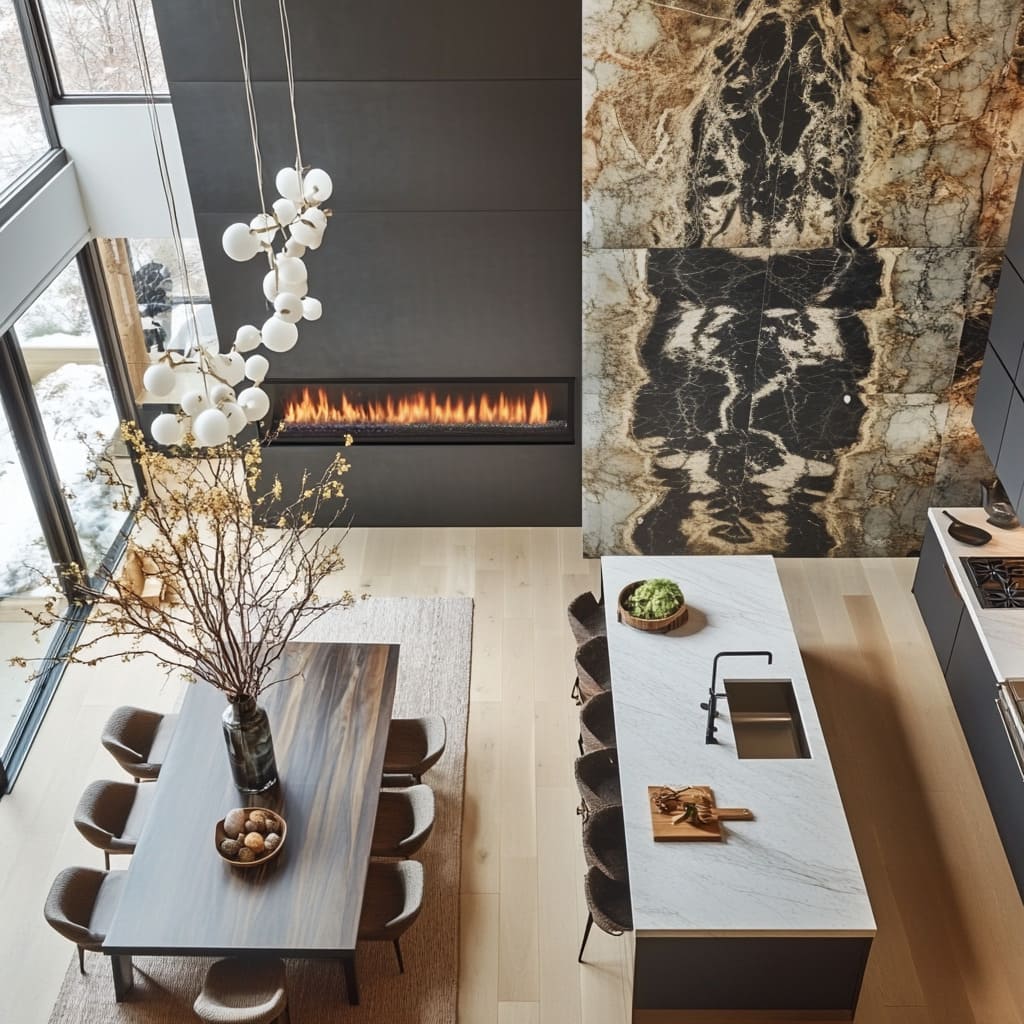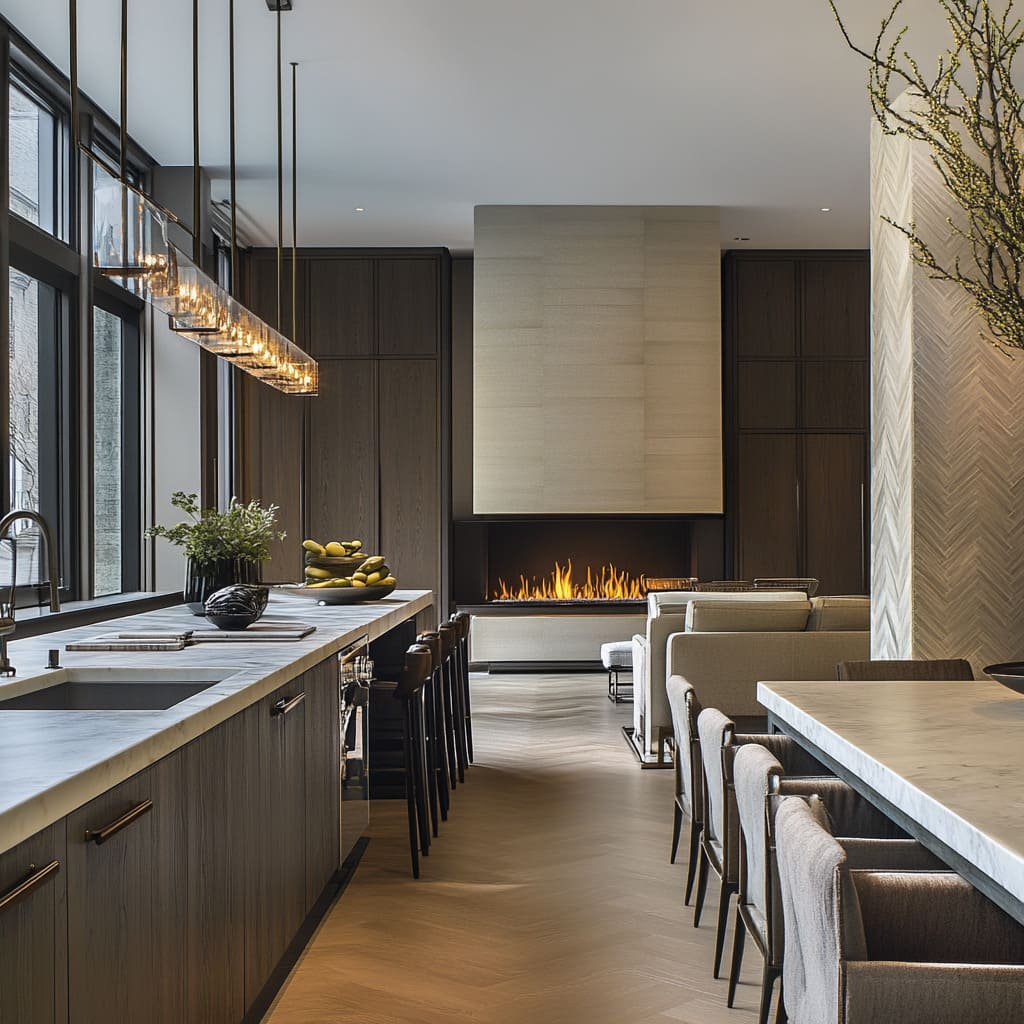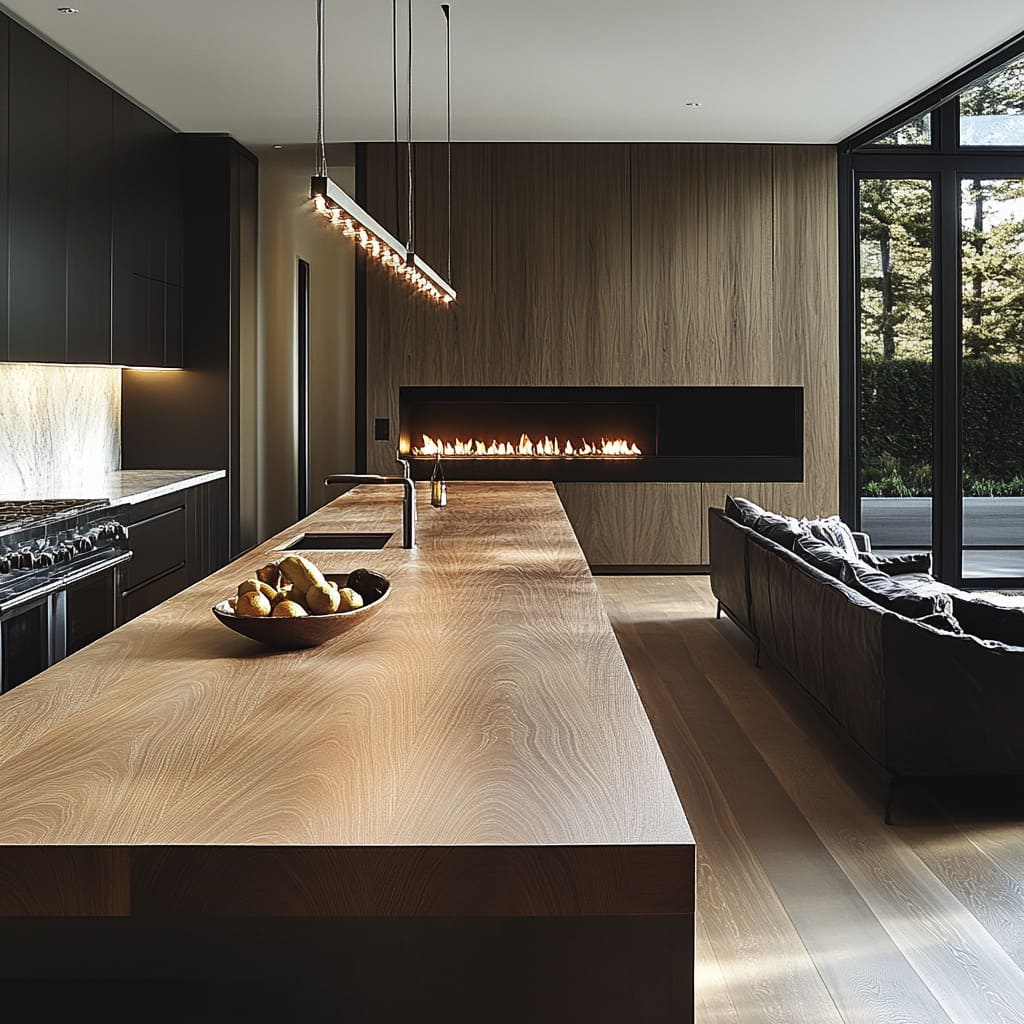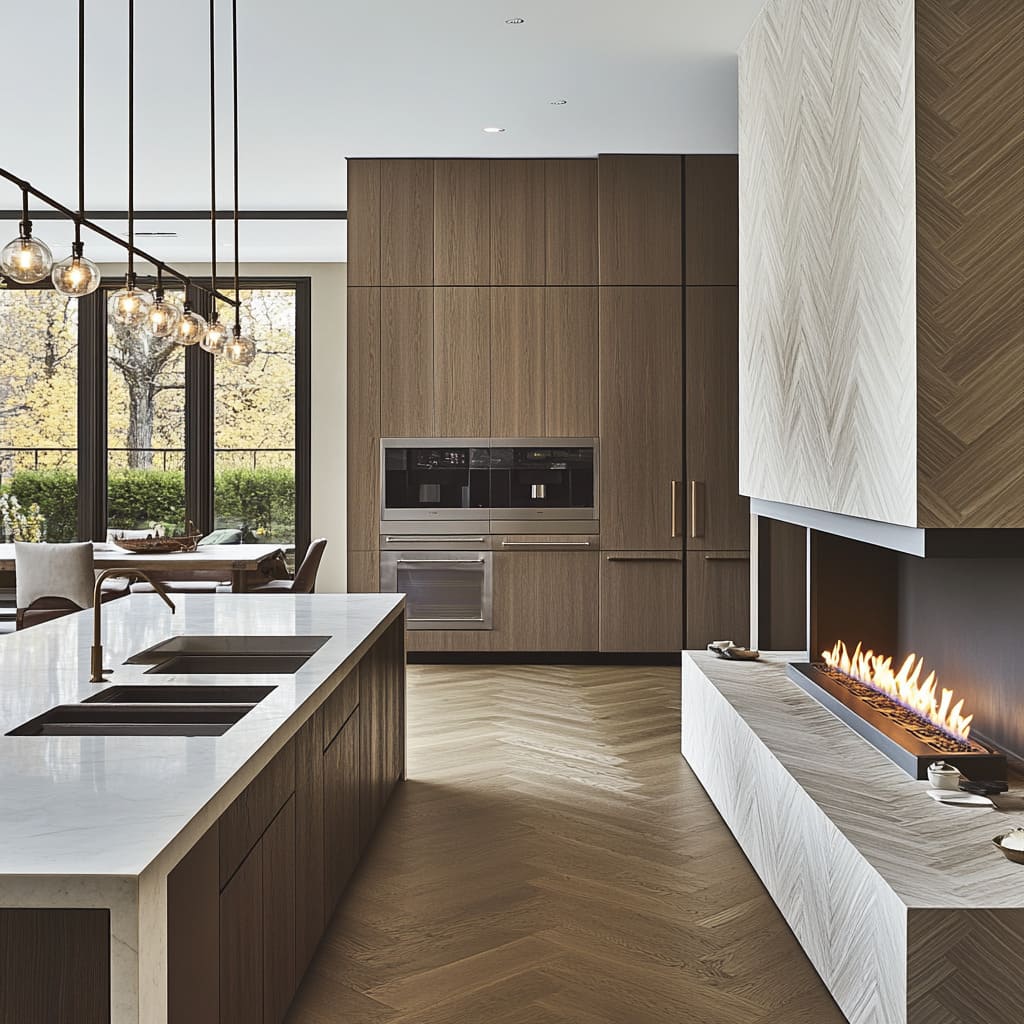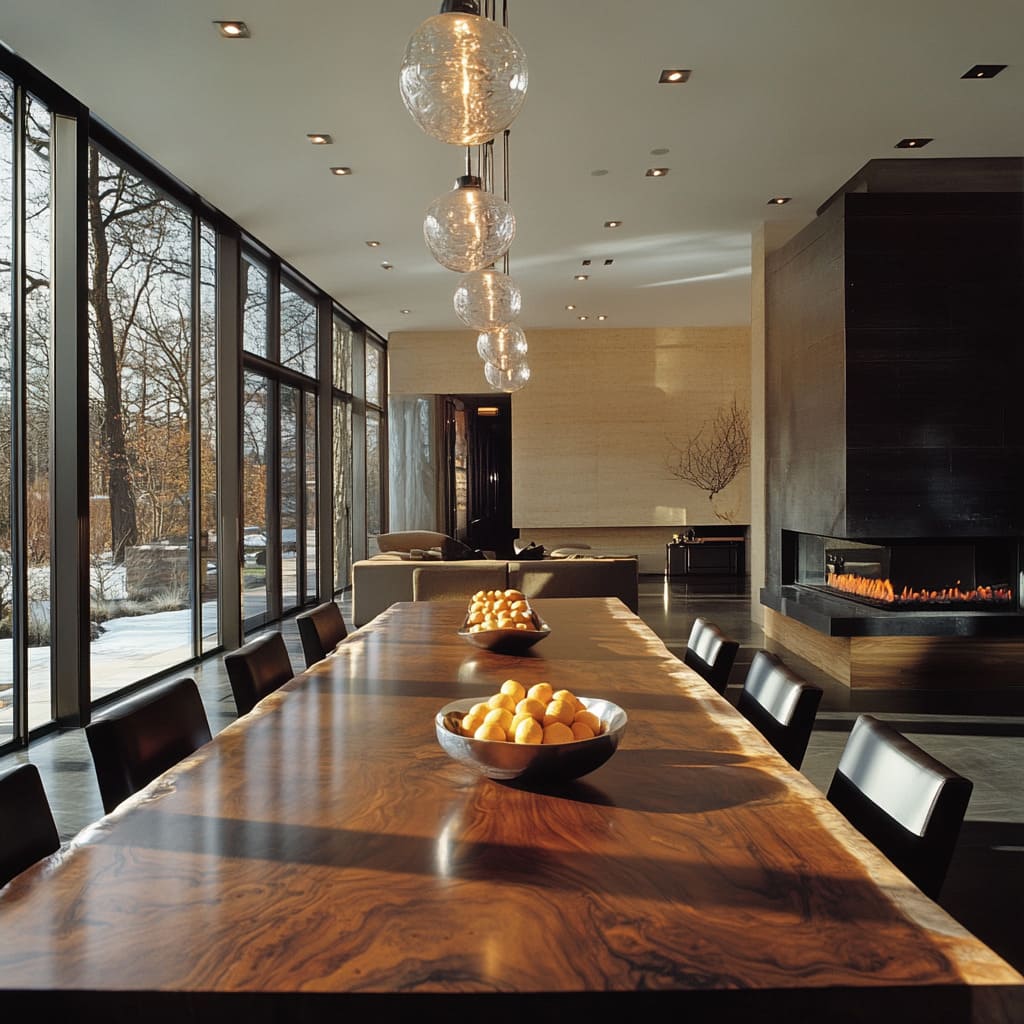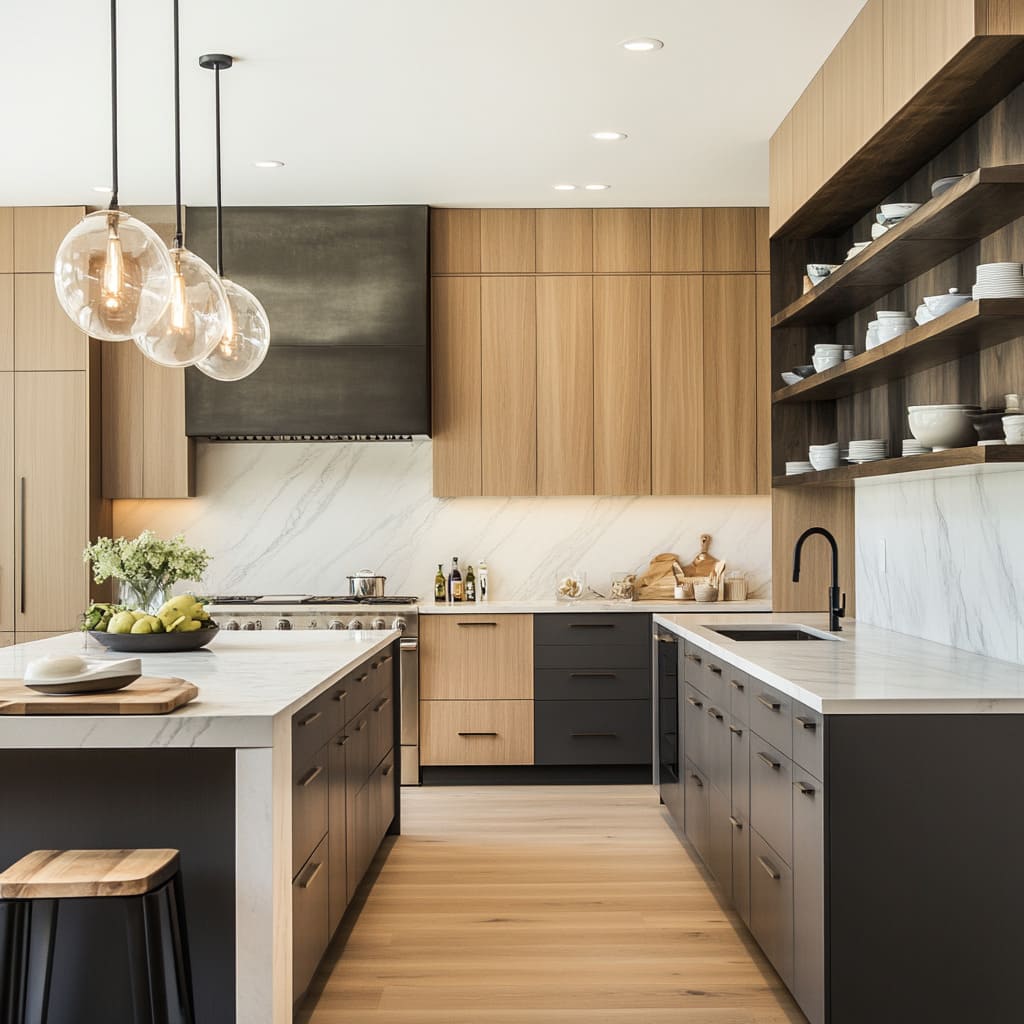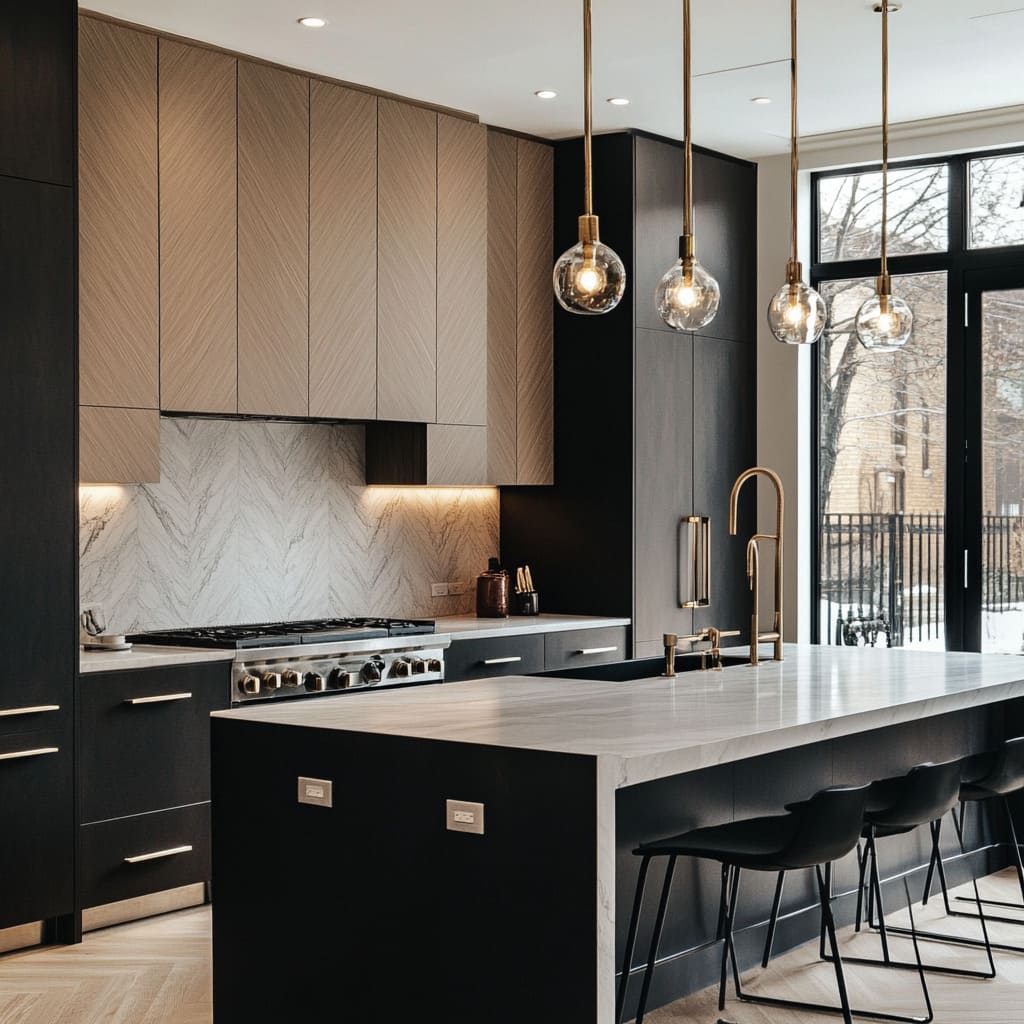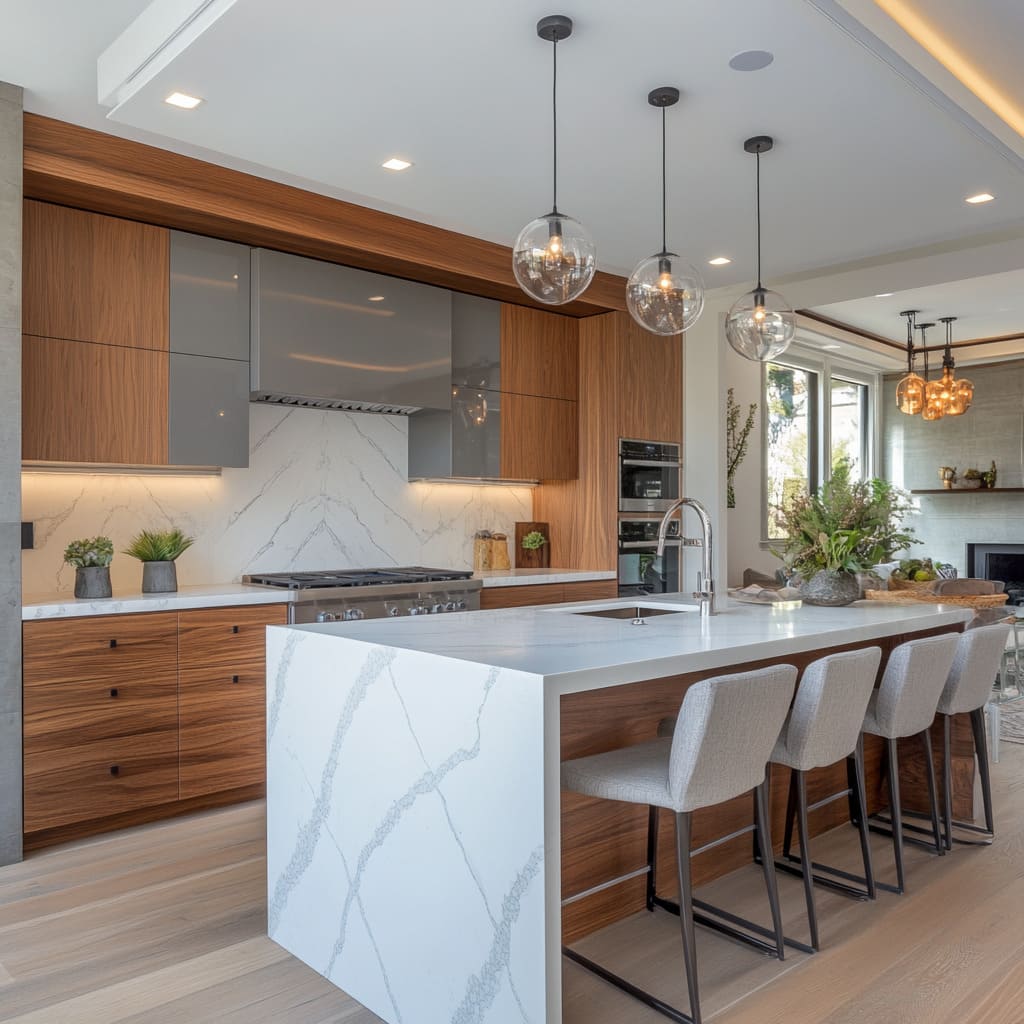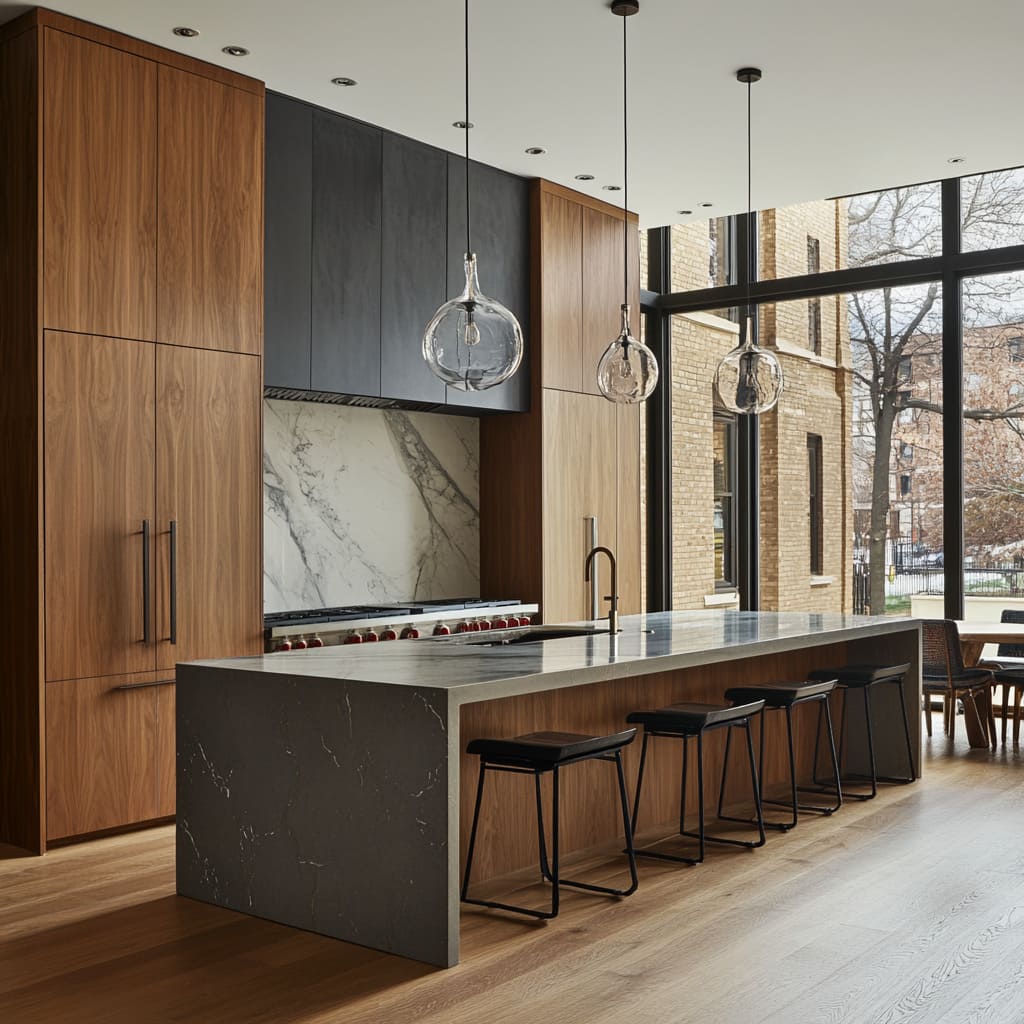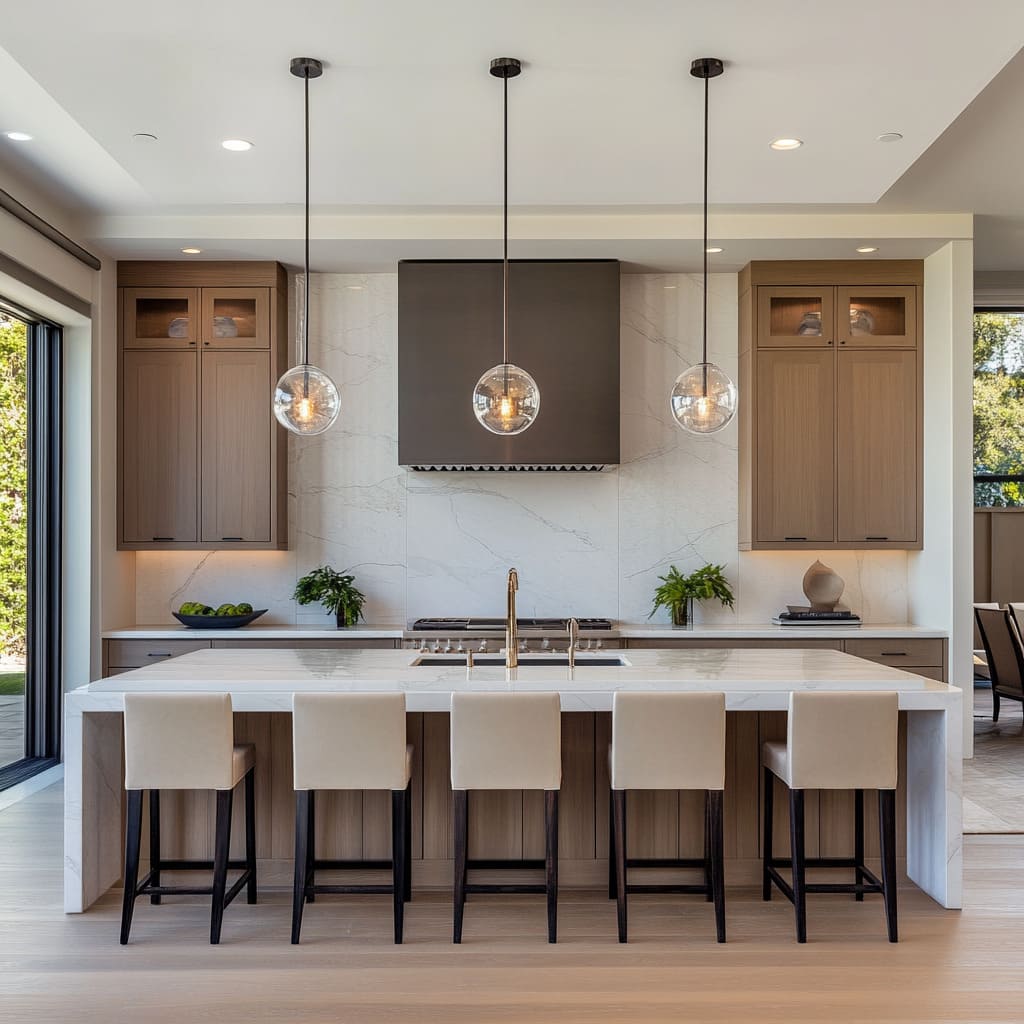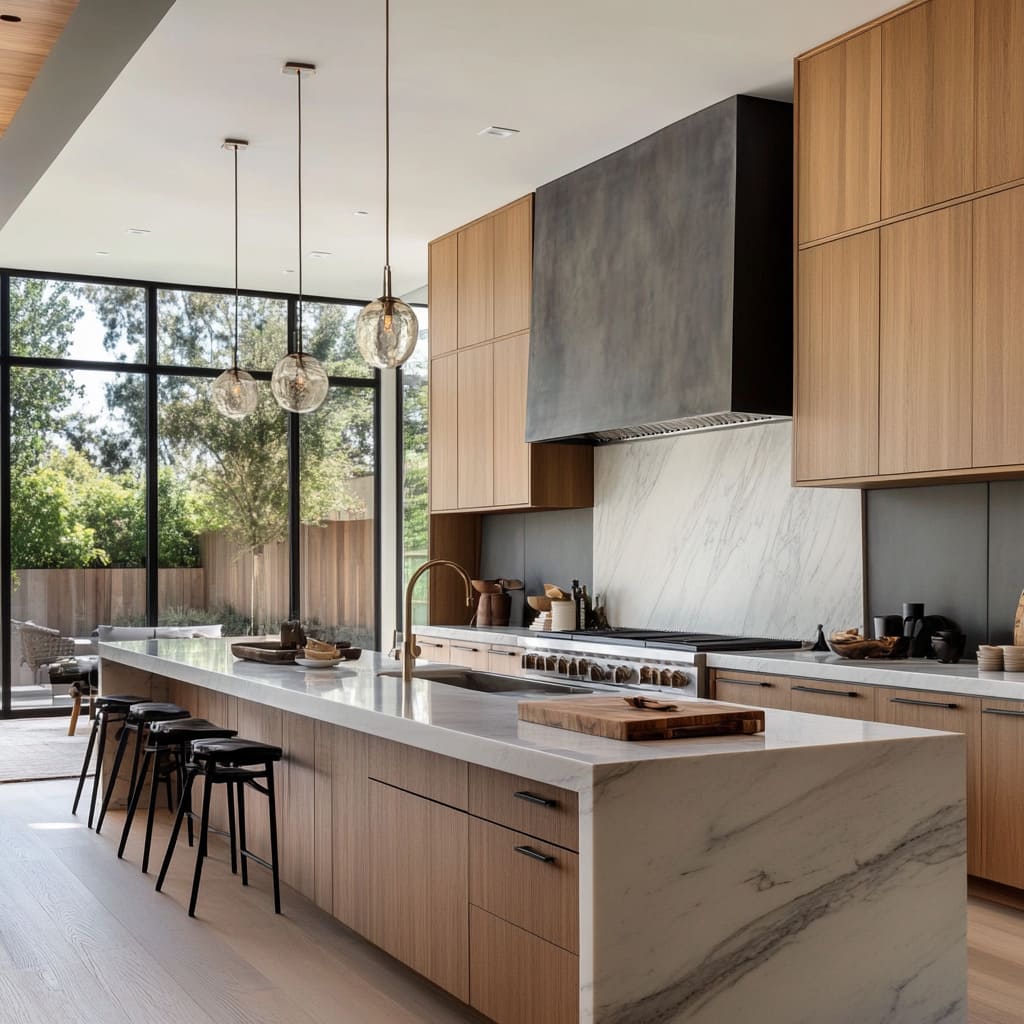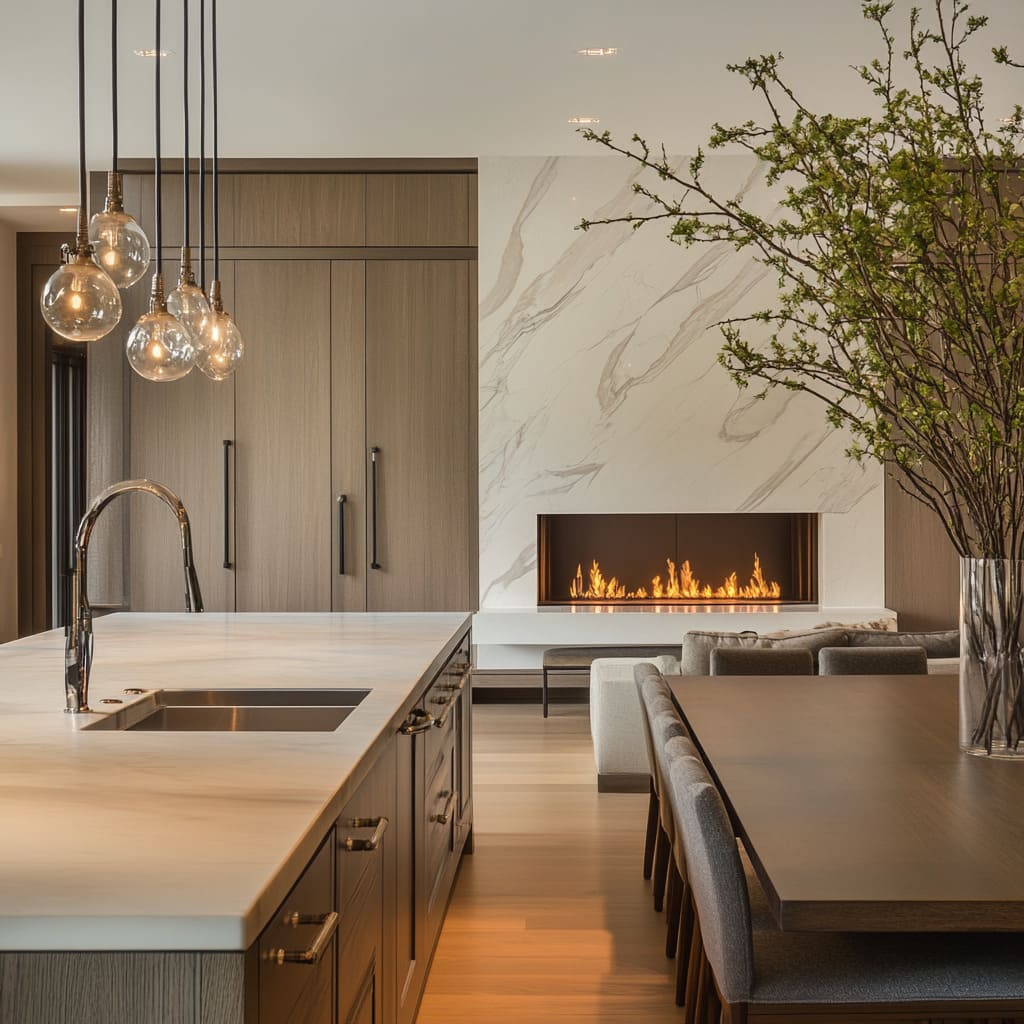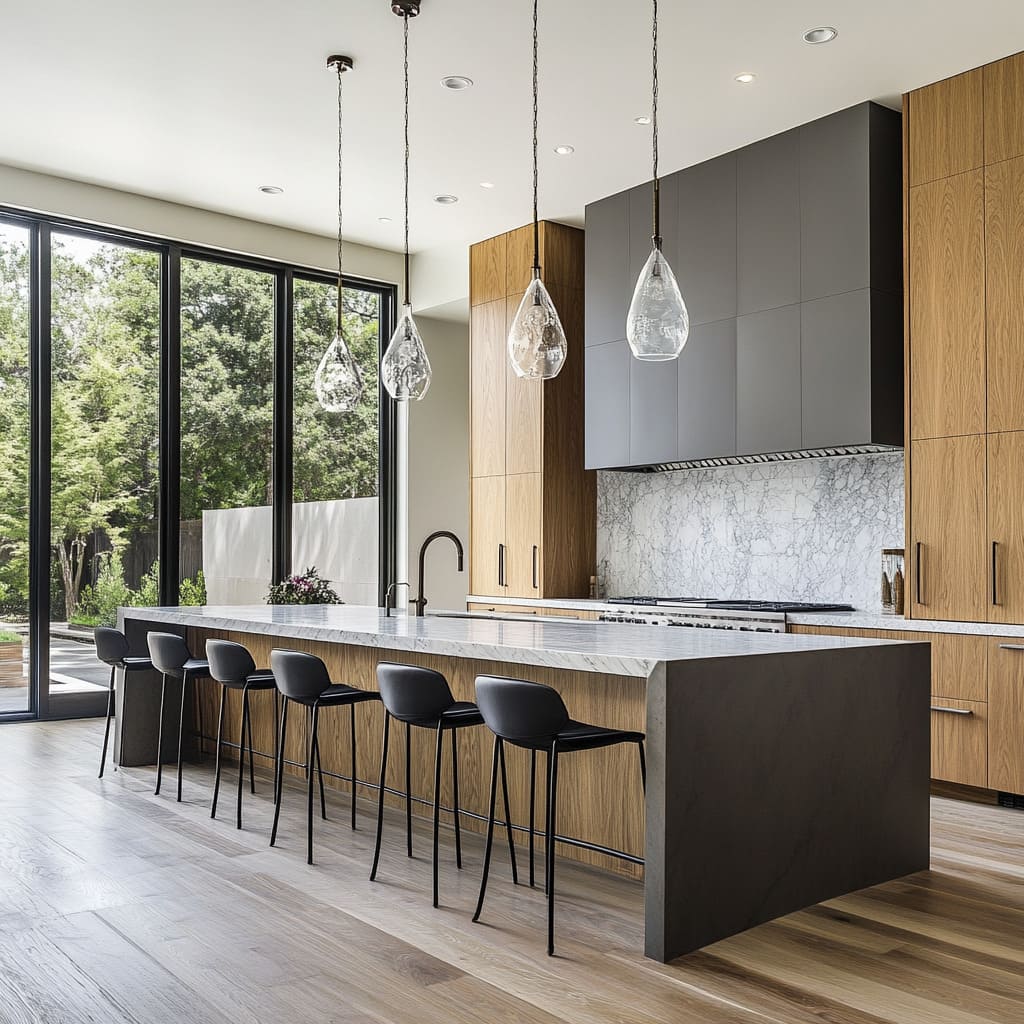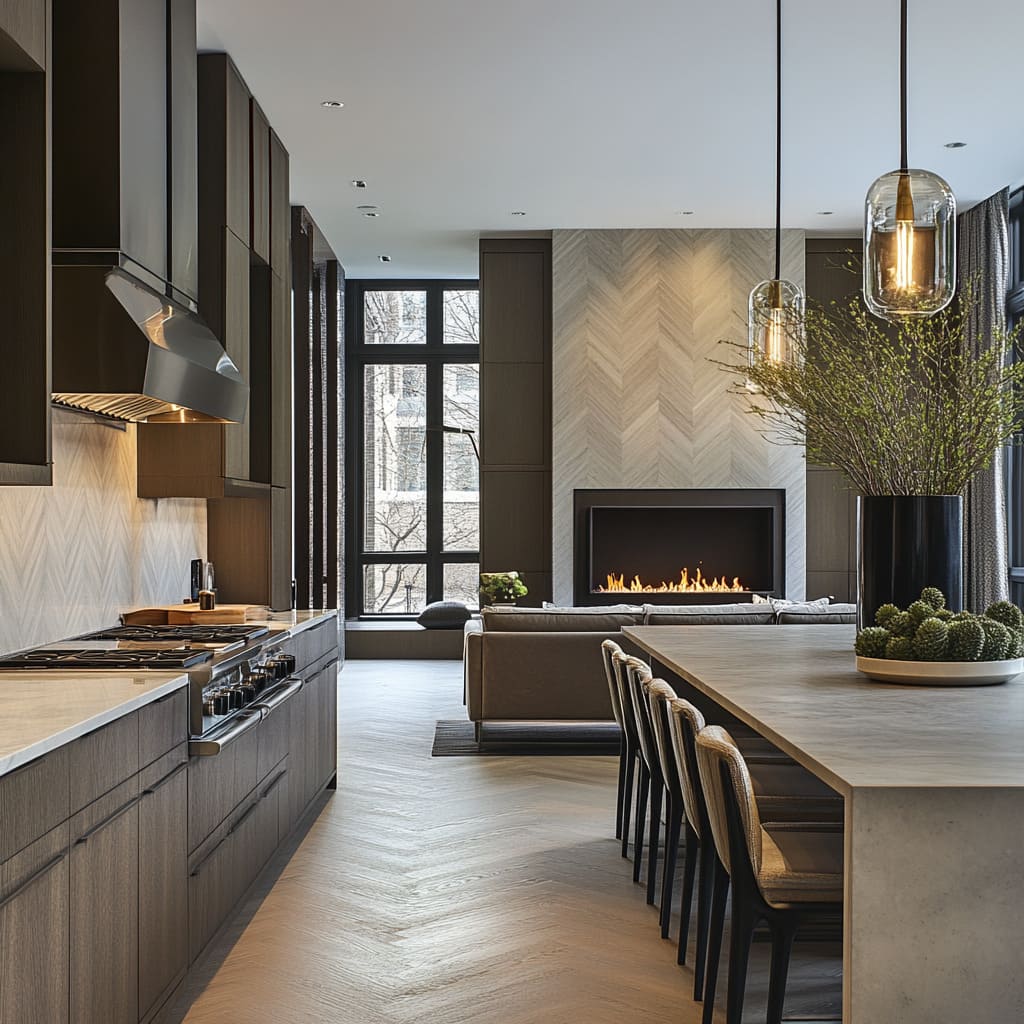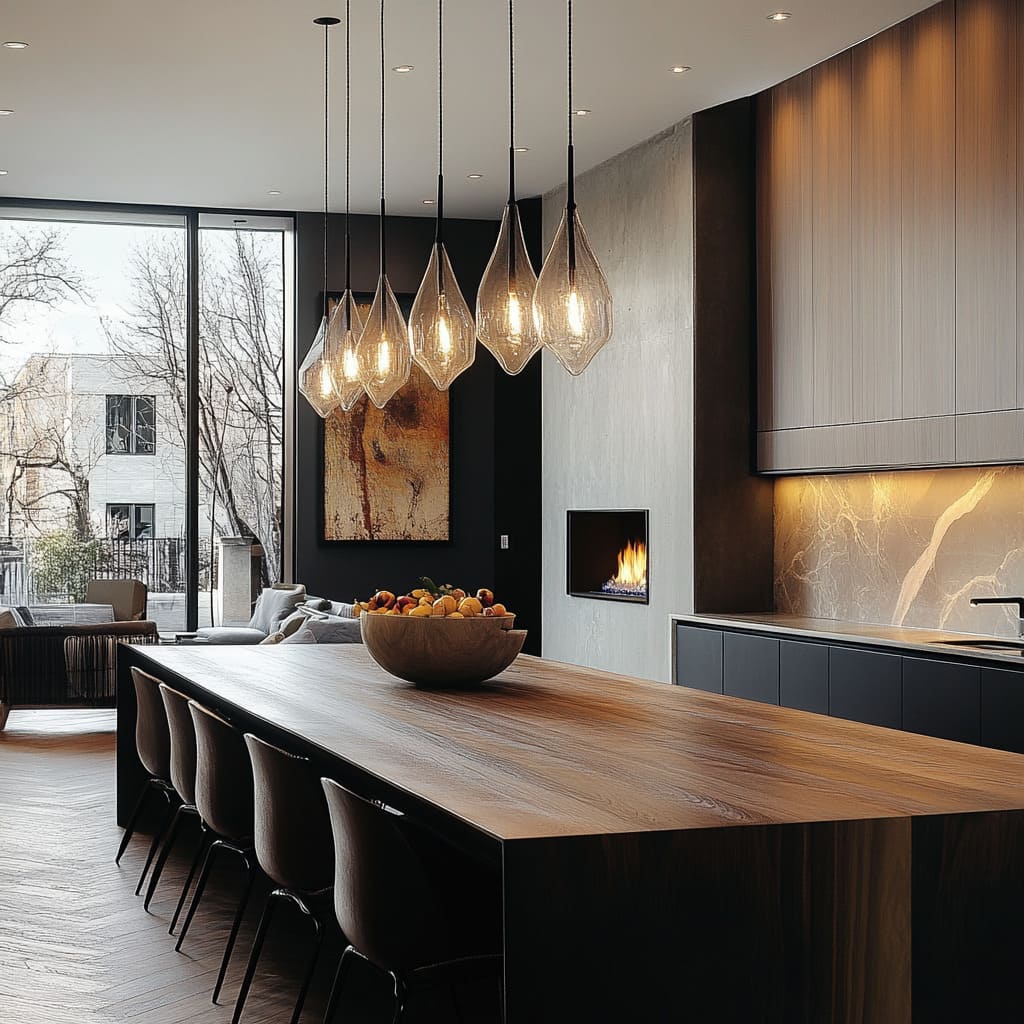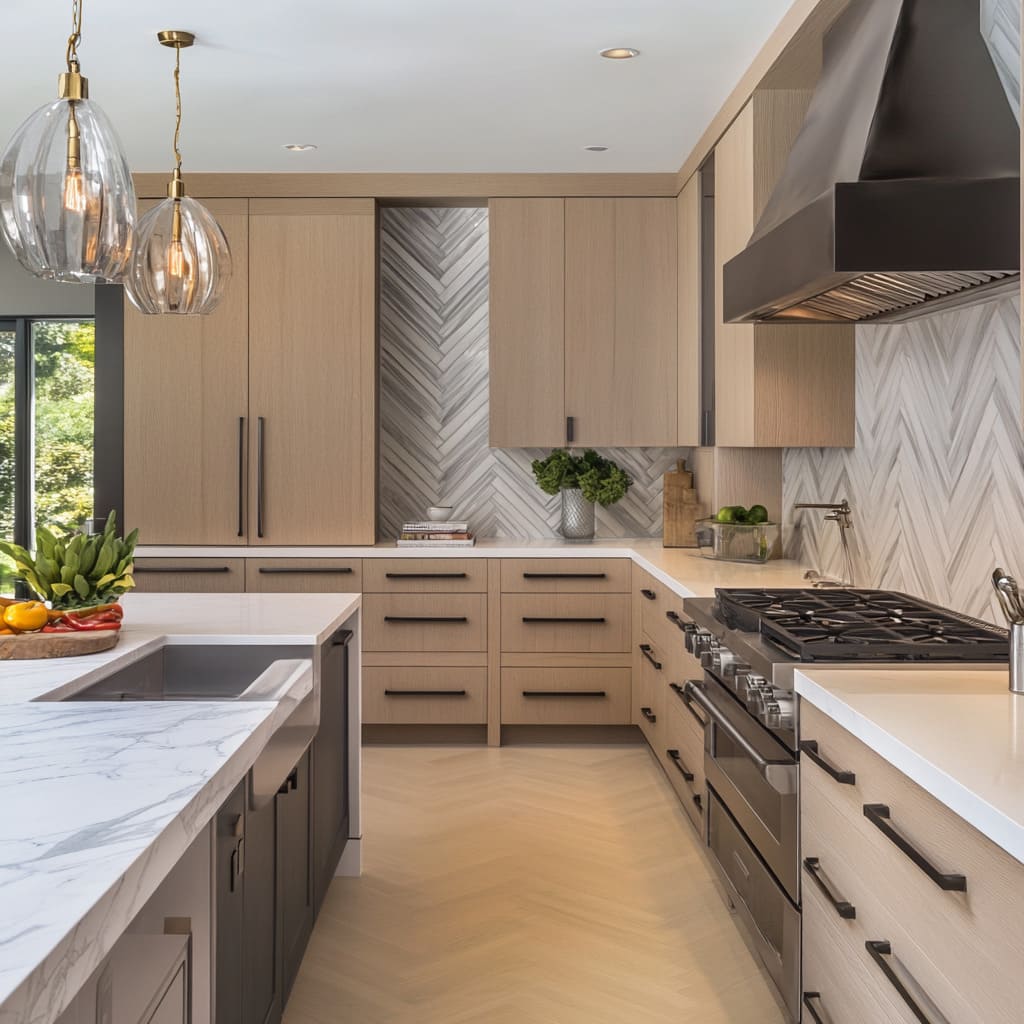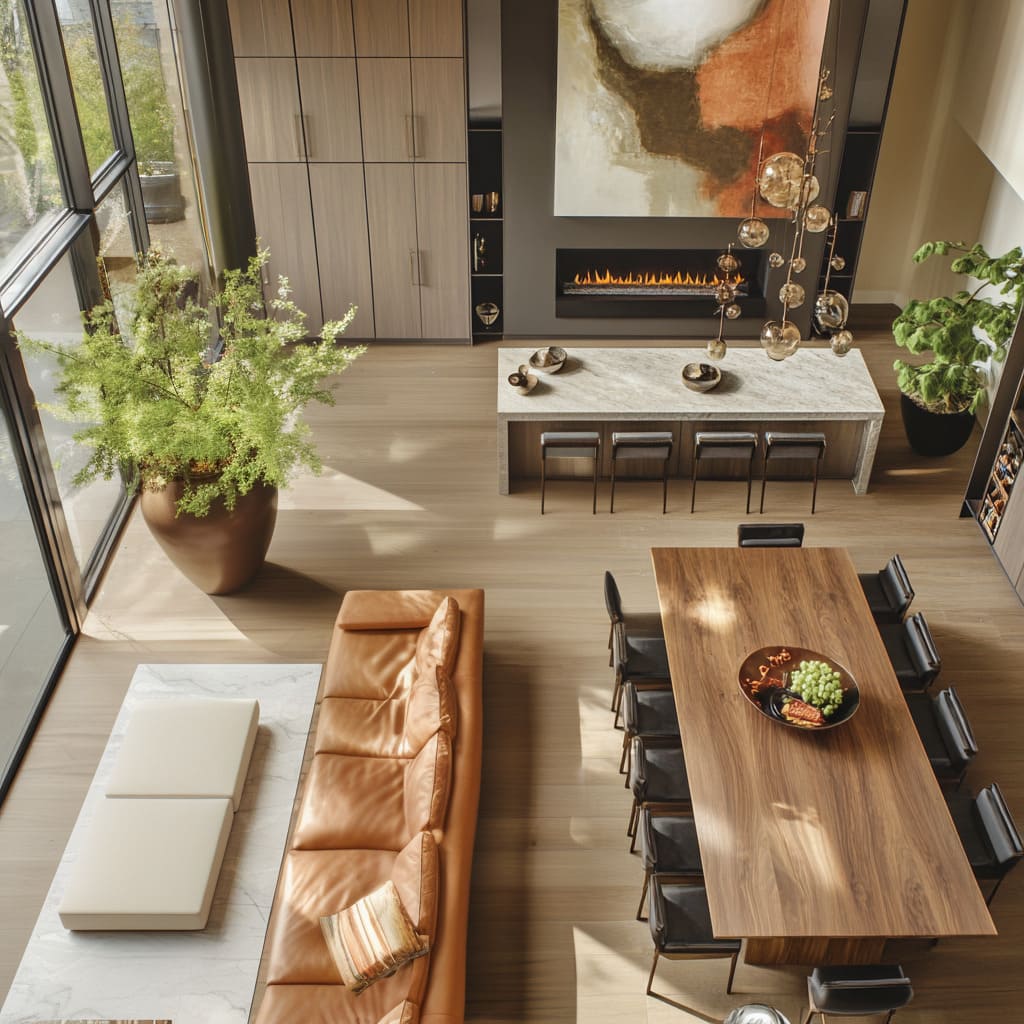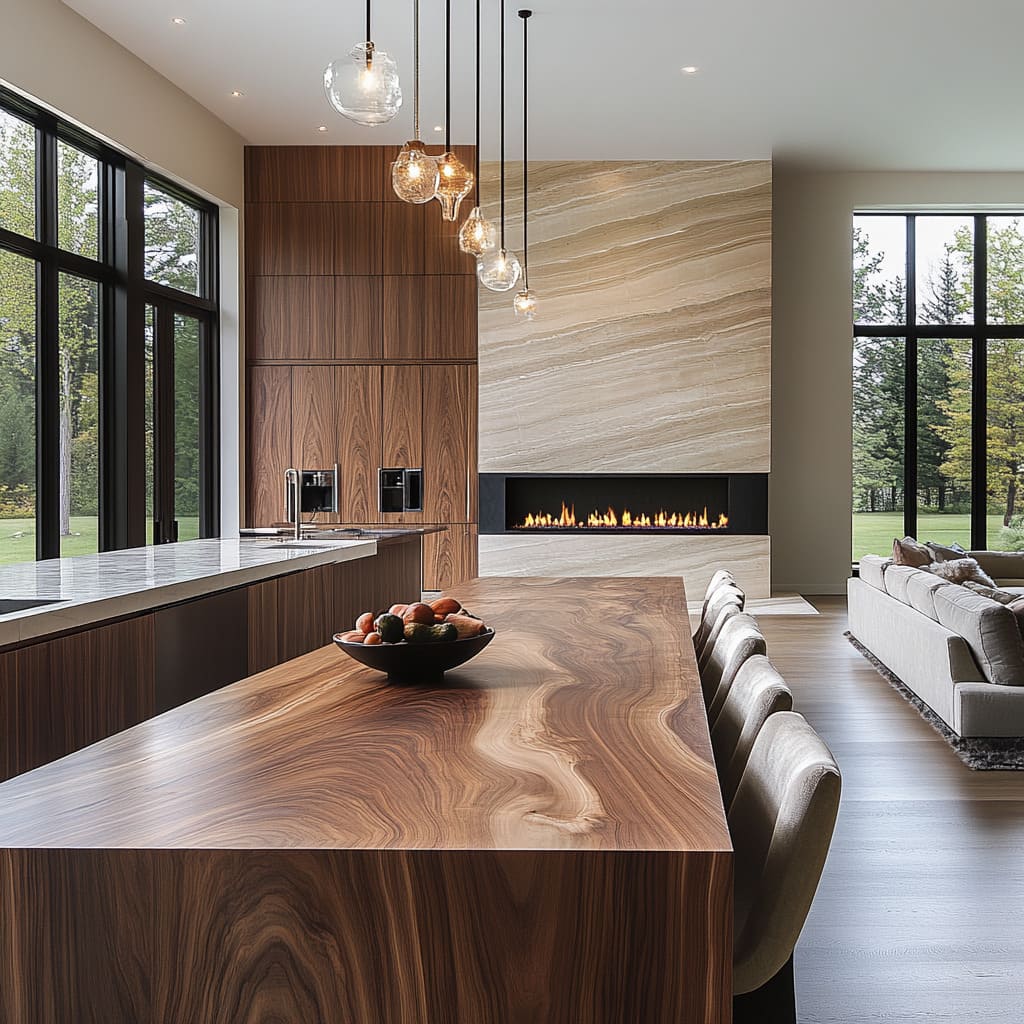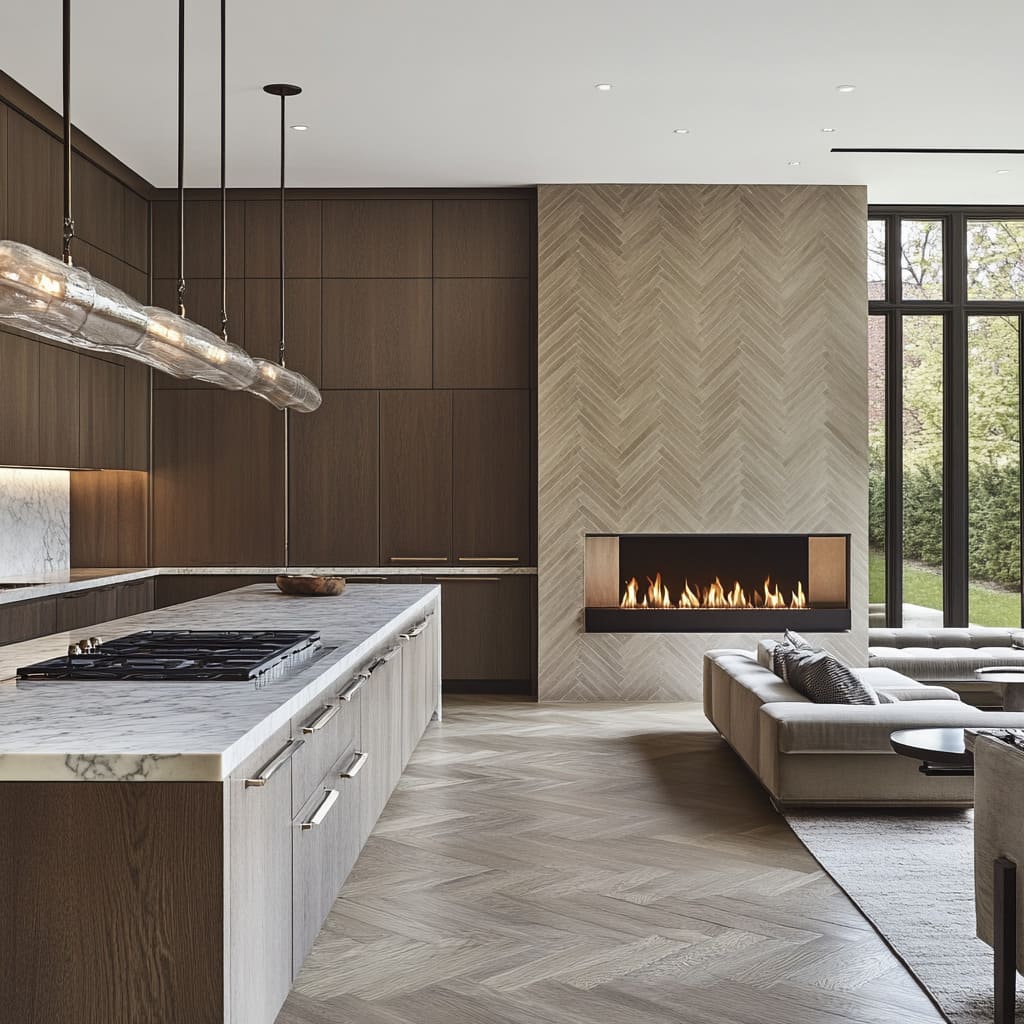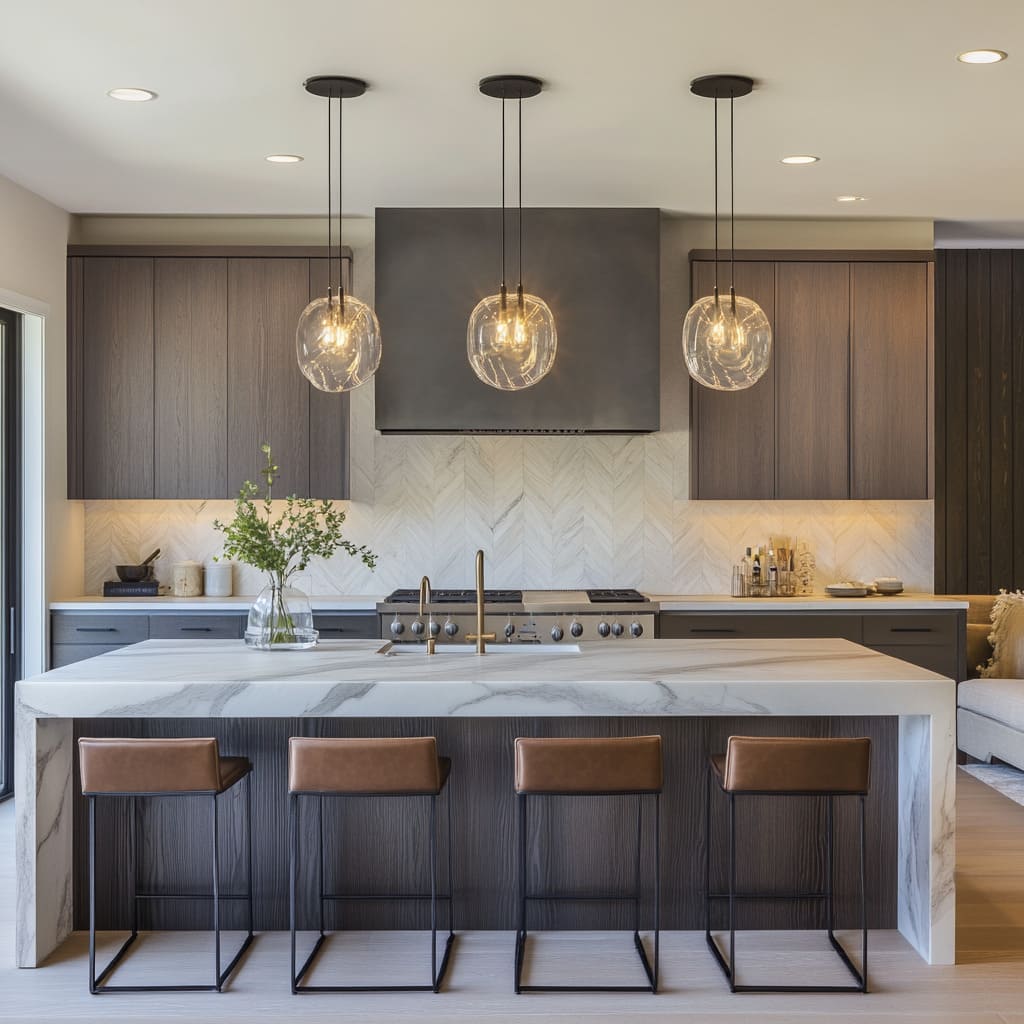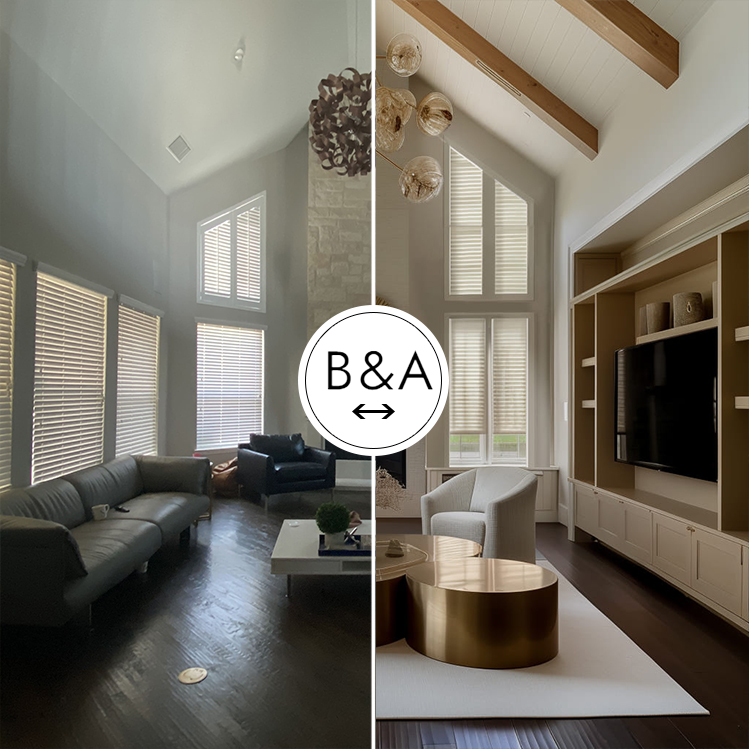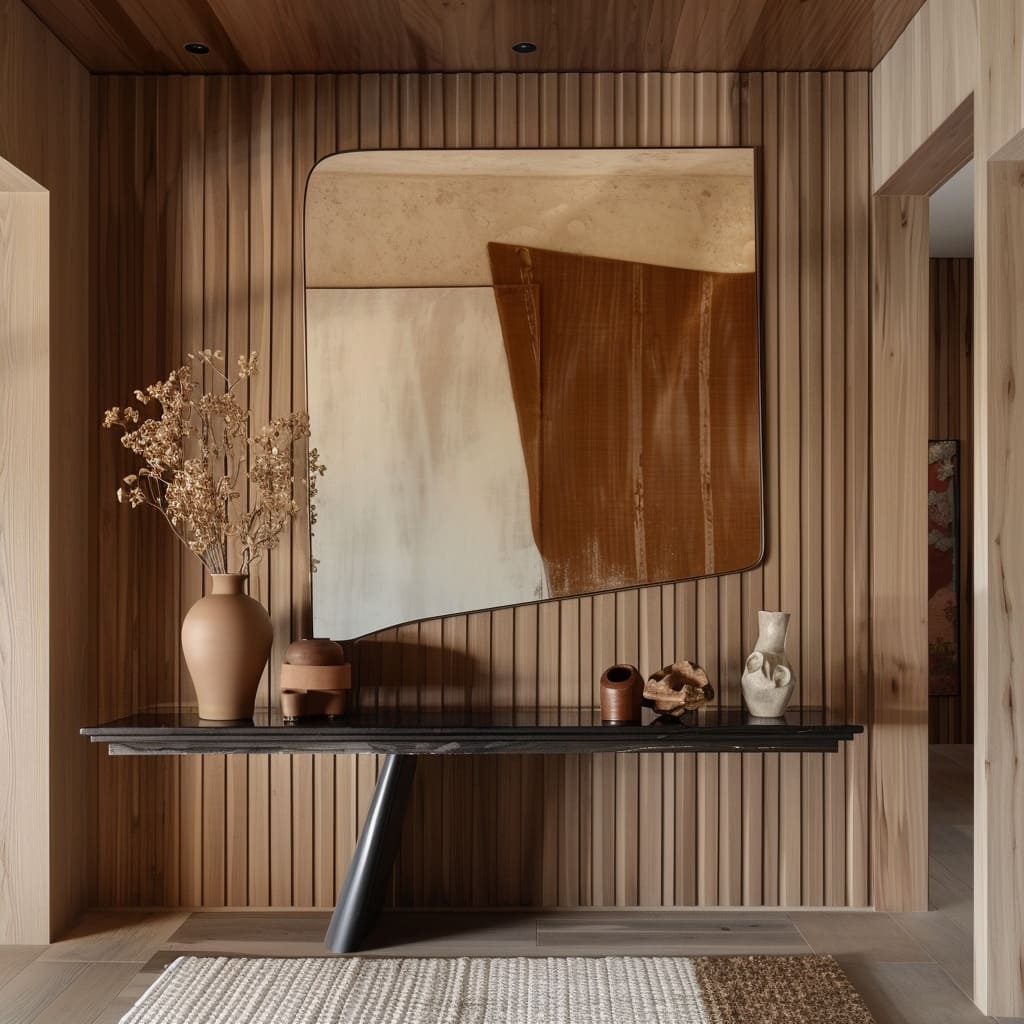In recent years, the design landscape has seen a significant shift away from the once-dominant all-white kitchen. Today, more homeowners and designers are embracing the versatility and warmth that non-white kitchens can bring.
The allure of non-white kitchens lies in their ability to balance elegance and functionality while offering endless possibilities for personalization. Whether it’s through rich wood tones, sleek matte finishes, or a mix of contrasting materials, non-white kitchens offer a fresh approach to modern design.
This article aims to explore the various elements that define non-white kitchens, providing detailed insights into the materials, layouts, and design principles that make these spaces both practical and visually appealing
The Appeal of Non-White Kitchens
Why Choose a Non-White Kitchen?
The decision to opt for a non-white kitchen often stems from a desire to create a space that feels unique and inviting. While white kitchens are known for their clean and timeless look, non-white kitchens offer a broader palette that can cater to diverse tastes and lifestyles.
The use of warmer tones, such as natural wood finishes or soft grays, adds depth and character, making the kitchen a more dynamic part of the home. Additionally, non-white kitchens tend to be more forgiving when it comes to showing wear and tear, making them a practical choice for busy households.
By moving away from the traditional white, homeowners can infuse their kitchen with a sense of personality and warmth that reflects their style
Influence on Mood and Space
Color plays a crucial role in shaping the atmosphere of a kitchen. Non-white kitchens, with their varied tones and textures, can create a more inviting and comfortable environment. Darker cabinets, for example, can add a sense of coziness and sophistication, while lighter wood finishes can make the space feel warm and airy.
The choice of color also affects how the space is perceived in terms of size and openness. Darker shades can make a large kitchen feel more intimate, while lighter tones can enhance the sense of space in smaller kitchens.
This flexibility allows homeowners to tailor the mood of their kitchen to suit their needs, whether they are looking for a place to relax, entertain, or cook
Practical Considerations
One of the practical benefits of non-white kitchens is their ability to hide imperfections and stains more effectively than their white counterparts. This makes them an ideal choice for families or anyone who uses their kitchen frequently. The range of available colors and finishes also means that non-white kitchens can be customized to fit various lifestyle needs, whether that means choosing a durable finish for heavy use or opting for materials that are easy to clean and maintain.
The practical advantages, combined with the aesthetic flexibility, make non-white kitchens a smart choice for many homeowners
Key Design Elements in Non-White Kitchens
Cabinetry
The cabinetry in a non-white kitchen is often the most defining feature. Material choices play a significant role in setting the tone of the space. Natural wood cabinets, for example, bring warmth and texture, offering a timeless appeal that works well in both traditional and modern settings.
For those who prefer a sleeker look, matte finishes in darker hues like charcoal or navy can provide a contemporary edge. The design of the cabinetry itself, whether it includes simple, clean lines or more intricate patterns like herringbone or chevron, adds an additional layer of sophistication. The choice of hardware, such as matte black handles or brushed brass pulls, further personalizes the space, adding subtle details that enhance the overall design
Countertops
Countertops are another crucial element that contributes to the kitchen’s overall aesthetic. In non-white kitchens, countertops often serve as a point of contrast, balancing the darker tones of the cabinetry. Marble countertops with light veining are a popular choice, offering both elegance and durability.
The waterfall edge, where the countertop material extends down the sides of the island, adds a modern touch and emphasizes the quality of the materials used. For those looking for something more unique, materials like soapstone or concrete can add texture and interest, creating a focal point in the kitchen.
The interplay between the countertop material and the surrounding elements, such as cabinetry and backsplash, creates a cohesive look that ties the entire kitchen together.
Backsplash Designs
The backsplash in a non-white kitchen offers an opportunity to add visual interest and texture. Marble backsplashes with herringbone patterns are a popular choice, adding both depth and sophistication to the space. The use of natural stone not only enhances the aesthetic appeal but also provides a durable surface that can withstand the demands of cooking and cleaning.
For those looking to make a bolder statement, choosing a backsplash with contrasting colors or unique textures can create a striking focal point. The key is to select a backsplash that complements the overall color scheme of the kitchen while adding an element of surprise or contrast.
Flooring
Flooring in a non-white kitchen should be selected with both form and function in mind. Light wood flooring is a popular choice, offering a warm and natural look that complements the darker tones of the cabinetry. Patterns like chevron or herringbone add visual interest and help to create a sense of continuity throughout the space.
The choice of flooring material, whether it be wood, tile, or stone, should also take into account the kitchen’s level of use. Durability and ease of maintenance are important factors, especially in a space where spills and foot traffic are common. The flooring should not only enhance the kitchen’s aesthetic but also contribute to its overall functionality
Lighting
Lighting is a critical aspect of any kitchen design, and in non-white kitchens, it plays an essential role in highlighting the room’s features. Natural light, provided by large windows, can enhance the warmth of wood tones and make the space feel open and airy. Artificial lighting, such as pendant lights over the kitchen island, adds both function and style.
Clear glass globes with brass fittings, for example, offer a modern yet timeless look that complements the overall design. Recessed lighting throughout the ceiling ensures that the kitchen is well-lit and functional at all times, while under-cabinet lighting can be used to highlight the texture and color of the backsplash. The combination of natural and artificial light sources creates a well-balanced environment that is both practical and visually appealing
Fixtures and Hardware
The choice of fixtures and hardware in a non-white kitchen can significantly influence the overall aesthetic. Matte black or brushed brass fixtures add a modern and sophisticated touch, creating a striking contrast against lighter cabinetry or complementing darker tones. The style of the fixtures, whether sleek and minimalist or more ornate, should align with the overall design theme of the kitchen.
Integrated sinks and contemporary faucets with clean lines contribute to a streamlined look, while also enhancing functionality. These small details, though often overlooked, play a crucial role in bringing the kitchen’s design together, adding a polished finish to the space.
Layout and Spatial Planning
Open-Concept Designs
Open-concept kitchen designs have become increasingly popular, and non-white kitchens are particularly well-suited to this layout. By eliminating walls and creating a seamless flow between the kitchen, dining, and living areas, an open-concept design enhances the sense of space and light. In a non-white kitchen, the use of darker cabinetry and contrasting materials can help to define different areas within the open layout, while still maintaining a cohesive overall design.
The result is a space that feels connected yet distinct, allowing for both social interaction and practical cooking activities.
Island Configurations
The kitchen island is often the centerpiece of an open-concept kitchen, and its design can have a significant impact on the overall feel of the space. In a non-white kitchen, the island can serve as a focal point, with materials and finishes that complement or contrast with the surrounding cabinetry. The size and shape of the island should be proportionate to the room, providing ample workspace and seating without overwhelming the space.
An island with a waterfall countertop, where the material extends down the sides, adds a touch of luxury and sophistication. The inclusion of seating, whether through stools or chairs, makes the island a versatile area for dining, socializing, or even working, enhancing the functionality of the kitchen.
Functional Zoning
Effective zoning within the kitchen is essential for both functionality and aesthetics. In a non-white kitchen, zoning can be achieved through the careful placement of appliances, storage solutions, and workspaces. The layout should allow for easy movement between different areas, such as the stove, sink, and refrigerator, while also providing plenty of counter space for food preparation.
The use of different materials or colors can help to visually separate different zones, creating a sense of order and organization. This approach not only enhances the kitchen’s efficiency but also contributes to its overall design
Connection with Other Living Spaces
One of the key benefits of an open-concept design is the seamless connection between the kitchen and other living spaces. In a non-white kitchen, this connection can be enhanced through the use of complementary materials and colors that tie the different areas together. For example, wood finishes used in the kitchen can be echoed in the dining area or living room, creating a cohesive and harmonious look.
The use of consistent lighting fixtures, such as pendant lights, throughout the space also helps to unify the design. This integrated approach ensures that the kitchen feels like a natural extension of the home, rather than a separate, isolated area
Material and Finish Selection
Natural Wood
Natural wood is a popular choice for non-white kitchens, offering both warmth and texture. The beauty of natural wood lies in its versatility, with different finishes and grains that can be tailored to suit a variety of design styles. In a modern kitchen, light wood finishes with a smooth, matte surface can create a sleek and contemporary look, while darker wood tones with visible grain patterns add depth and character.
The use of wood is not limited to cabinetry; it can also be incorporated into flooring, countertops, and even ceiling beams, adding a cohesive and organic feel to the space. The natural variations in wood grain and color also add a unique touch, making each kitchen truly one-of-a-kind
Contrasting Elements
One of the defining features of a non-white kitchen is the use of contrasting elements to create visual interest and balance. This can be achieved through the careful selection of materials and finishes that complement each other while adding depth to the design. For example, dark cabinetry paired with light countertops creates a striking contrast that draws the eye, while also ensuring that the kitchen feels open and airy.
The use of contrasting textures, such as a smooth marble countertop against rough-hewn wood cabinets, adds an additional layer of sophistication. These contrasts not only enhance the kitchen’s visual appeal but also help to define different areas within the space
Mixed Finishes
In a non-white kitchen, the use of mixed finishes can add dimension and interest to the design. Matte finishes are particularly popular for cabinetry, offering a sleek and modern look that is both elegant and understated. These can be paired with polished or honed countertops for a subtle contrast that adds depth without overwhelming the space.
The choice of hardware and fixtures also plays a role in the overall finish of the kitchen, with options like brushed brass or matte black adding a touch of sophistication. The key to successfully mixing finishes is to maintain a sense of balance, ensuring that each element complements the others while contributing to the overall aesthetic
Attention to Craftsmanship
The quality of craftsmanship is a crucial aspect of any kitchen design, and in a non-white kitchen, it plays a particularly important role. The use of high-quality materials, combined with attention to detail in the construction and installation, ensures that the kitchen not only looks beautiful but also functions effectively. This includes everything from the precision of the cabinetry to the seamless installation of countertops and backsplashes.
The result is a kitchen that feels cohesive and well-considered, with each element working together to create a space that is both practical and visually appealing.
Decor and Accessories
Minimalist Approach
In a non-white kitchen, the decor should enhance the overall design without overwhelming it. A minimalist approach, where less is more, allows the beauty of the materials and finishes to take center stage. This might mean selecting just a few key accessories, such as a statement pendant light or a unique piece of art, that add personality to the space without cluttering it.
The focus should be on quality over quantity, with each piece chosen for its ability to complement the kitchen’s design and add to its overall aesthetic. This approach ensures that the kitchen feels open, airy, and inviting, rather than busy or cluttered
Accent Pieces
While the overall decor in a non-white kitchen may be minimalist, there is still room for carefully selected accent pieces that add warmth and personality. This might include items like a beautiful vase, a set of high-quality knives on display, or a collection of cookbooks that reflect the homeowner’s interests. These pieces should be chosen for their ability to enhance the kitchen’s design, whether through color, texture, or form.
The key is to strike a balance between adding personal touches and maintaining the clean, sophisticated aesthetic of the space.
Color Palette
The color palette in a non-white kitchen is an essential aspect of the overall design. While the primary tones might be neutral, such as grays, browns, or blacks, there is often an opportunity to introduce subtle pops of color through accessories or accent pieces. These might include warm tones like brass or copper, or cooler hues like deep blue or green.
The use of a cohesive color palette helps to tie the different elements of the kitchen together, creating a sense of harmony and balance. The choice of colors should reflect the overall design theme, whether that be modern, rustic, or transitional, and should complement the natural materials used in the space
Integration of Natural Elements
Incorporating natural elements into the decor of a non-white kitchen adds warmth and a sense of connection to the outdoors. This might include items like a wooden cutting board, a bowl of fresh fruit, or a potted plant that brings a touch of greenery to the space. The use of natural materials, such as wood, stone, or metal, also adds texture and interest, creating a layered and dynamic look.
These elements not only enhance the visual appeal of the kitchen but also contribute to a sense of well-being, making the space feel more comfortable and inviting.
Case Studies and Examples
Visual Examples
To fully appreciate the beauty and versatility of non-white kitchens, it’s helpful to look at real-life examples. These case studies can provide inspiration and insight into how different materials, colors, and layouts can be used to create a stunning kitchen. Visual examples might include photos of kitchens with rich wood cabinetry, sleek marble countertops, or bold backsplashes that serve as focal points.
Each example should be accompanied by a detailed description of the design elements used, explaining how they contribute to the overall aesthetic and functionality of the space.
Detailed Breakdown
In addition to visual examples, a detailed breakdown of the key features of each kitchen can provide further insight into the design process. This might include an analysis of the materials chosen, the layout of the space, and the selection of fixtures and hardware. By breaking down each element, readers can gain a better understanding of how to apply these design principles to their own kitchens.
This section should also highlight the importance of craftsmanship and attention to detail, showing how these factors contribute to the overall success of the design.
Conclusion
As we’ve explored throughout this article, non-white kitchens offer a unique opportunity to create a space that is both functional and aesthetically pleasing. By choosing materials and colors that reflect your personal style, you can design a kitchen that feels warm, inviting, and sophisticated. The key is to focus on quality, from the selection of materials to the attention to detail in the installation, ensuring that every element works together to create a cohesive and beautiful space.
